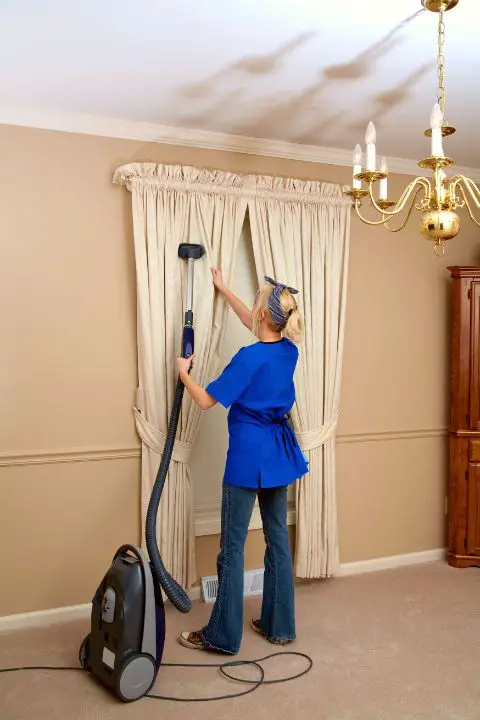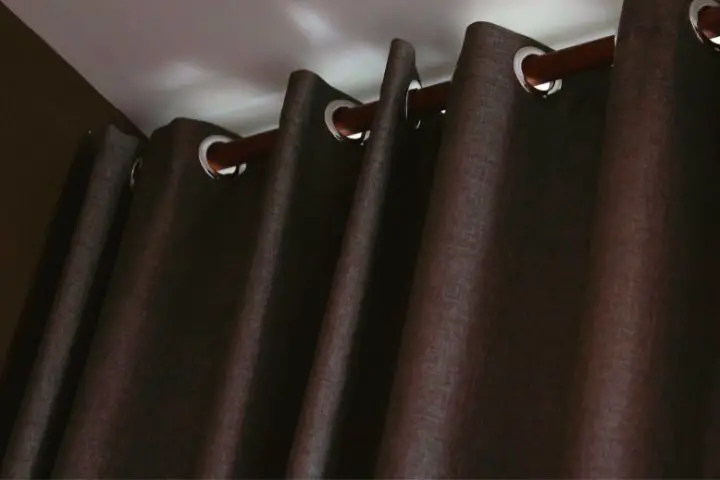Are Blackout Curtains Toxic? | No need to panic!
In recent years, we’ve learned that a shocking number of everyday goods could be doing damage to our health. At the same time, countless items have been demonized and deemed “toxic” with little (if any) supporting evidence.
Sun-blocking blackout curtains are frequently the subject of such concerns. So is that concern justified? Or are blackout curtains relatively harmless in the grand scheme of things?
In nearly all cases, blackout curtains are extremely low on the list of potentially toxic household items! However, there are some things you should be aware of in order to select the safest curtains possible for your home.
Are Blackout Curtains Good for You?
Blackout curtains can make getting a good night’s sleep possible for those living in urban environments or working 3rd shift. In that sense, blackout curtains can certainly be beneficial to your health!
On the other hand, there’s some concern that blackout curtains release toxins, called volatile organic compounds (VOCs), into the air. This is technically true. But it’s also probably not worth stressing over.
What Are VOCs?

VOCs are so-categorized because their chemical structure allows them to be released into the atmosphere extremely easily.
There are many VOCs in existence, most of which come from man-made chemicals. One of the most infamous examples of a VOC is formaldehyde.
VOCs are everywhere. But, according to the US Environmental Protection Agency, the rate of indoor air pollution caused by VOCs is up to 10 times higher than pollution outdoors.
It’s also important to note that VOCs vary greatly in terms of how bad they are for the environment and our health.
Unfortunately, we don’t yet understand everything there is to know about VOCs, including the long-term health effects that may be connected to these compounds.
Where Do Household VOCs Come From?
Blackout curtains are just one of the countless household items that emit VOCs. Scented items are one of the biggest sources of VOCs in the average home.
Other popular items that release VOCs (often at higher rates than blackout curtains) include:
- Air fresheners
- Aerosol sprays (cleaning products, sunscreen, hairspray, etc.)
- Permanent markers
- Bug repellents and pesticides
- Paint
- Glue
And that’s far from an exhaustive list!
So while blackout curtains are a source of VOCs, there’s very little chance that they will have a significant impact on your home’s indoor air quality overall.
How to Minimize VOC Exposure From Blackout Curtains

We can’t stress enough that fixating on the potential toxicity of your blackout curtains is probably worse for your health than the VOCs themselves! Yet there are a few steps you can take to minimize the number of VOCs being released into your home:
Invest in Certified Non-Toxic Fabric
Not all blackout curtains are created equal. For example, modern blackout curtains tend to contain far fewer harmful chemicals than those made even a couple of decades ago.
If you’re concerned about introducing VOCs to your home’s air, be sure to look for blackout curtains manufactured with few or no VOC-creating chemicals. Products certified by the government or another large organization as non-toxic are ideal.
Certified non-toxic curtains usually come with a premium price tag. Keep this in mind when planning your home decor budget if buying the safest option is your top priority!
Allow for Off-Gassing
While VOCs are sometimes released without any odor, it’s a good idea to give your new blackout curtains a quick sniff straight out of the packaging. A strong “new upholstery” odor is a clear sign that you should let the curtains air out before installation.
Realistically, it can take months or years for fabric to fully off-gas any VOCs. But the rate at which VOCs are emitted quickly decreases over time.
Letting new blackout curtains air out for even a few days could make a big difference in the number of VOCs released into your home!
Dry Clean Responsibly

Believe it or not, cleaning your blackout curtains could introduce more VOCs to your home than the original product! At least, that’s the case if you ever choose to dry clean your window treatments.
Dry cleaning utilizes chemicals like tetrachloroethylene that release VOCs.
Avoid dry cleaning your blackout curtains unless absolutely necessary — an upholstery vacuum attachment and steam cleaner can accomplish a lot on their own!
If you must send your curtains off for dry cleaning, be sure to let the fabric air out before bringing them back into your home. Freshly dry cleaned items should not have an odor at the time of collection. But VOCs can still off-gas even after the chemical odor has dissipated.
Frequently Asked Questions
What Are the Symptoms of VOC Exposure?
Acute VOC exposure can cause symptoms like eye, nose, or throat irritation, nausea, dizziness, fatigue, and headaches.
The most common health issue caused by long-term VOC exposure is organ or nerve damage. Research also shows that some VOCs are carcinogenic in animals and humans.
While this is all very scary, it’s important to remember that VOCs come from many sources (not just blackout curtains)! Most cases of serious VOC exposure come from things like adhesives, paint thinners, and pesticides.
There are no confirmed cases of severe VOC exposure caused by blackout curtains in the home.
Do Thermal Curtains Release VOCs?

Yes, thermal curtains can release VOCs into the air just like blackout curtains can.
Like blackout curtains, thermal curtains are typically made with heavy-duty materials that may be exposed to various chemicals during the manufacturing process.
Follow the same precautions mentioned above when purchasing thermal curtains to avoid unnecessary VOC exposure.
Are Blackout Curtains Toxic for Nursery?
Blackout curtains are no more likely to release VOCs in one room than in another. But those VOCs could do more harm in a nursery than elsewhere.
Infants, toddlers, and pregnant people are most at-risk from VOC exposure. Research shows that VOC exposure at an early age could increase the chance of developing asthma, dermatitis, and other health issues.
Blackout curtains hung in a nursery should be chosen with this in mind. If possible, select blackout curtains that utilize several thick layers of fabric versus a synthetic liner. Opt for curtains labeled as certified non-toxic. And, of course, give the curtains plenty of time to off-gas out of the packaging before hanging them in your nursery.






